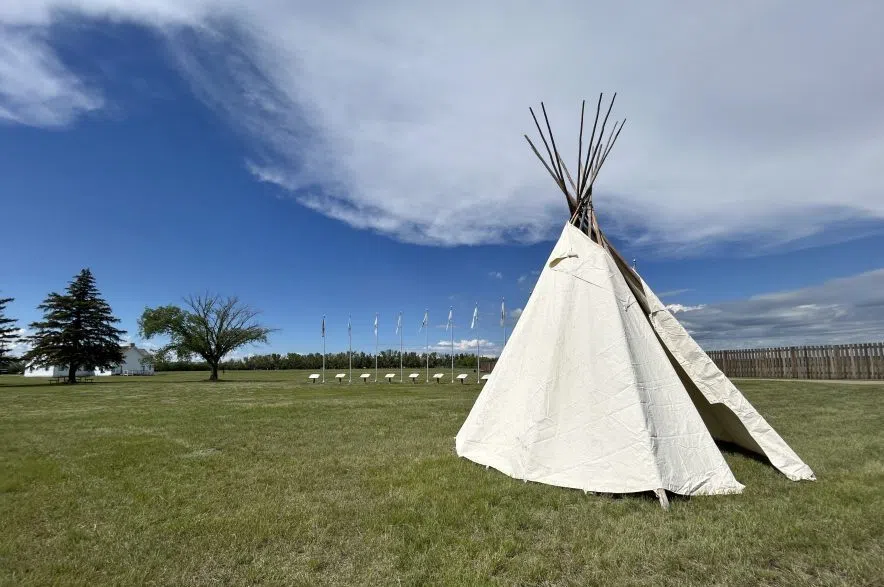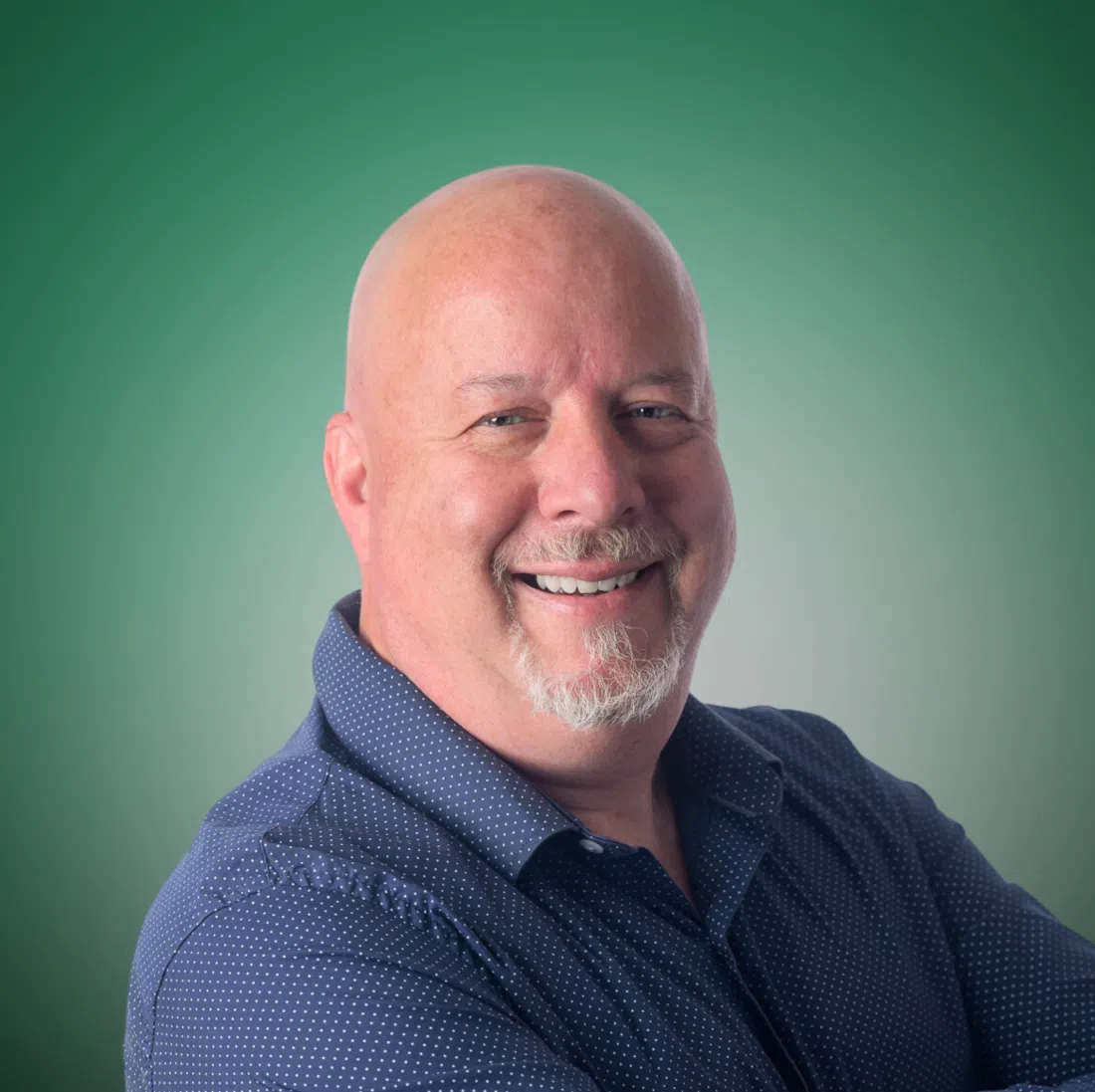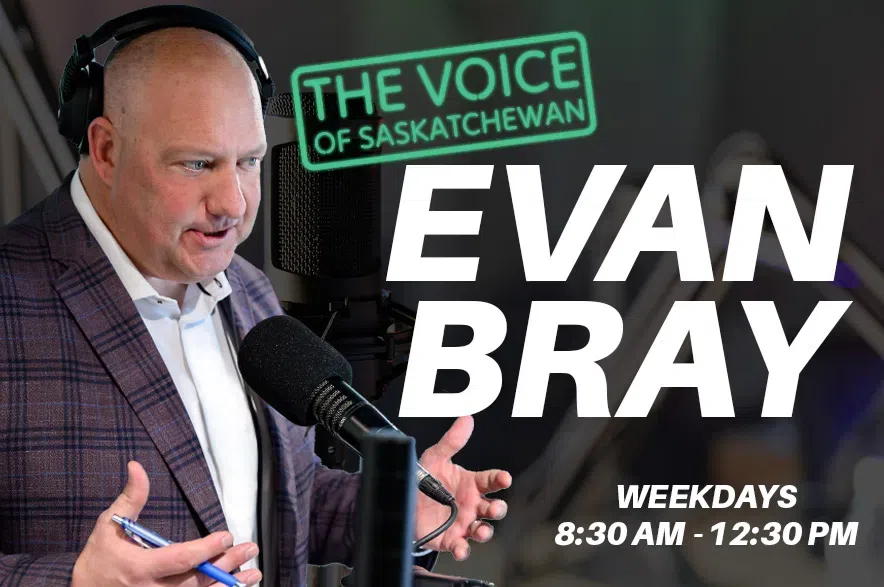Battleford, Sask. — Eric Tootoosis marked National Indigenous People’s Day this year by climbing into his truck and making the 65-kilometre drive from his home on Poundmaker First Nation to a site that was a source of great anguish for his ancestors.
As Tootoosis walked through the doors of the visitors centre at the Fort Battleford National Historic Site, he was greeted by the smiling faces of dozens of schoolchildren.
READ MORE:
- Feds fund health study for Indigenous communities downstream of oilsands
- Parole board ignored trauma of Indigenous man convicted of murder, court rules
- Strong connections to family inspire Saskatchewan Indigenous artists
The local knowledge keeper stepped up to the microphone and shared his perspective on the events that took place on this land more than a century ago, walking a fine line between honouring Canada’s history and ensuring the shared story is an honest recounting of events.
“When I’m asked, I have to tell the ancient truth,” he said in an interview with 650 CKOM.
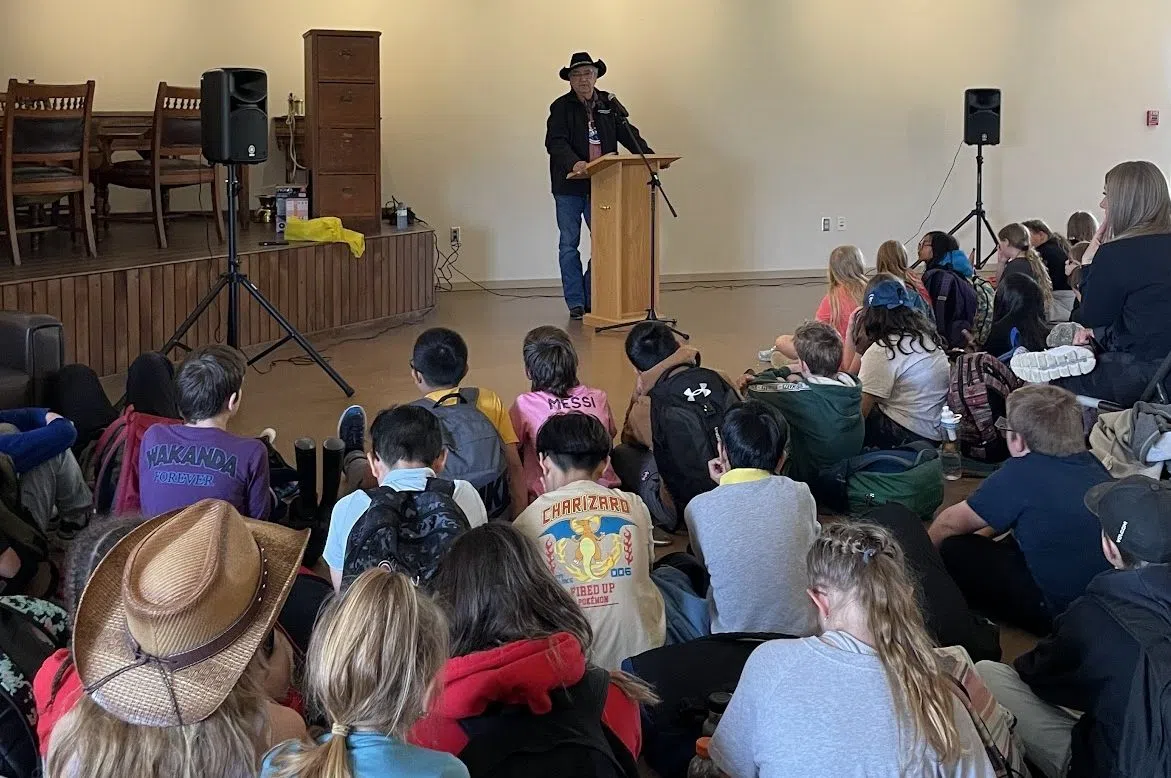
Eric Tootoosis spoke to students at the Fort Battleford National Historic Site on National Indigenous Peoples Day in June. (Alex Brown/650 CKOM)
Colourful post-it notes are haphazardly scattered upon the walls and fixtures of the buildings at the Fort Battleford historic site.
“These are suggestions from all of the people,” said Parks Canada Heritage Presenter Filip Miskulin.
Visitors to the site have scrawled their questions, concerns and criticisms relating to the site on each slip of paper before tacking them up for all to see.
“This is exactly what we are looking for,” Miskulin said. “A way to improve our interpretation of history.”
Public Relations and Communications Officer Lisa Leuty said Parks Canada is making a concerted effort to share previously untold perspectives of events that occurred on this land.
“Right now, Fort Battleford is undergoing sort of a rejuvenation, I guess you could say, of its presentation of the history surrounding the site,” Leuty said.
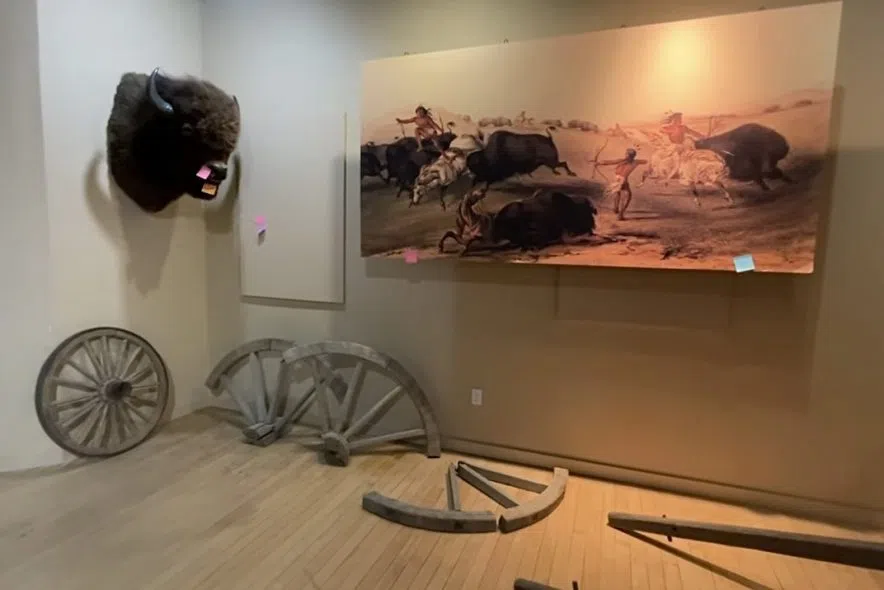
As you wander through the Fort Battleford historic site, you’ll find colourful post-it notes scattered on the walls. Visitors to the site have scrawled their questions, concerns and criticisms on each slip of paper before tacking them up for all to see. (Alex Brown/650 CKOM)
Fort Battleford was established in 1876. During the 1885 North-West Resistance, the fort was the focal point of the Canadian government’s military operations.
It’s where Chief Poundmaker, a Plains Cree chief known as a peacemaker, was arrested before being convicted of treason in July 1885. Poundmaker was exonerated by Prime Minister Justin Trudeau in 2019 — more than 130 years after his death.
Fort Battleford is also the location of the largest mass hanging in Canadian history. In November 1885 eight First Nations men convicted of murder were hanged. Their bodies were buried in a mass grave near the fort.
Students from Battleford Industrial School — a residential school for First Nations children — were brought to the site to witness the executions. In reference to the mass hanging, Prime Minister John A. Macdonald said in a letter to Lieutenant Governor and Indian Commissioner Edgar Dewdney “The executions … ought to convince the Red Man that the White Man governs.”
The post was used as a divisional headquarters and barracks until 1924. It was turned over to Parks Canada in 1951 to be administered as a national historic site.
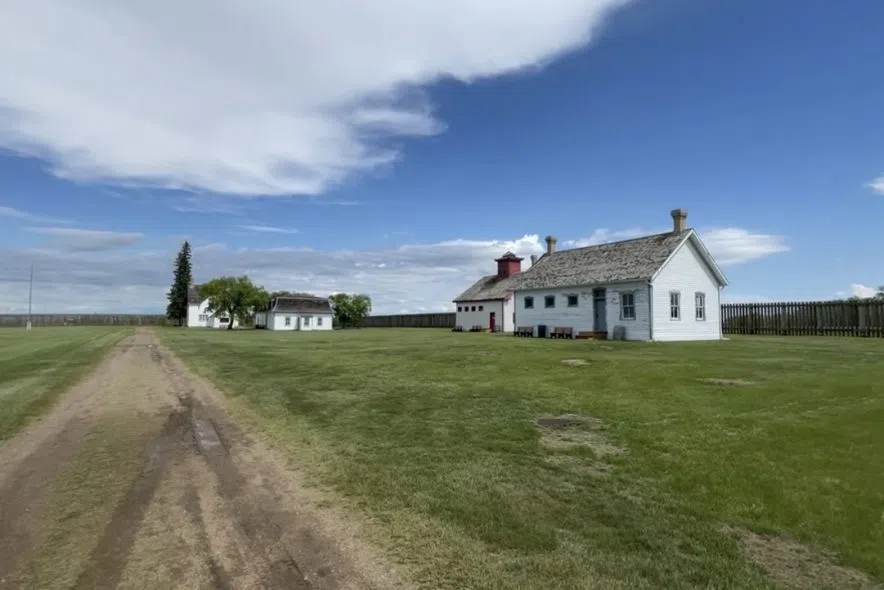
Fort Battleford was used as a divisional headquarters and barracks for the Canadian government’s military operations until 1924. It was turned over to Parks Canada in 1951 to be administered as a national historic site. (Alex Brown/650 CKOM)
“Many ways have been deployed to reduce the population of the Indigenous peoples,” Tootoosis said, noting many stories relating to the starvation and mistreatment of First Nations people by the Canadian government were overlooked for more than a century. “And now it has surfaced through this reconciliation order,” he said.
Miskulin said the story shared at the Fort Battleford historic site previously highlighted mostly the colonial viewpoint of events.
“Up until recently, the perspective from the Indigenous people wasn’t even asked,” he said. “Nobody cared.”
Parks Canada has created a Fort Battleford visitor experience working group to explore how the site can share a more thorough history with visitors.
The group includes municipal governments, community groups in the Battleford area, and nearby Indigenous communities.
Miskulin said some challenges come with reevaluating historical narratives, especially with very few physical records detailing the events from an Indigenous perspective.
“There [are] also still a lot of details that aren’t really precise,” he said. “We don’t have ways of getting those details. So, we are trying to get many different perspectives… to kind of get a better idea of what actually happened.”
Leuty said while the process is complex, she believes taking the time to listen and learn from community members is a crucial step on the path to reconciliation.
“It’s not just one person’s story, right? There were a lot of people with differing opinions and situations who were involved in the events,” she said. “It’s important to be able to try and tell all of those stories. And it’s just a question of gathering those stories and how best to present them… those kinds of questions are what we’re working through with the group.”
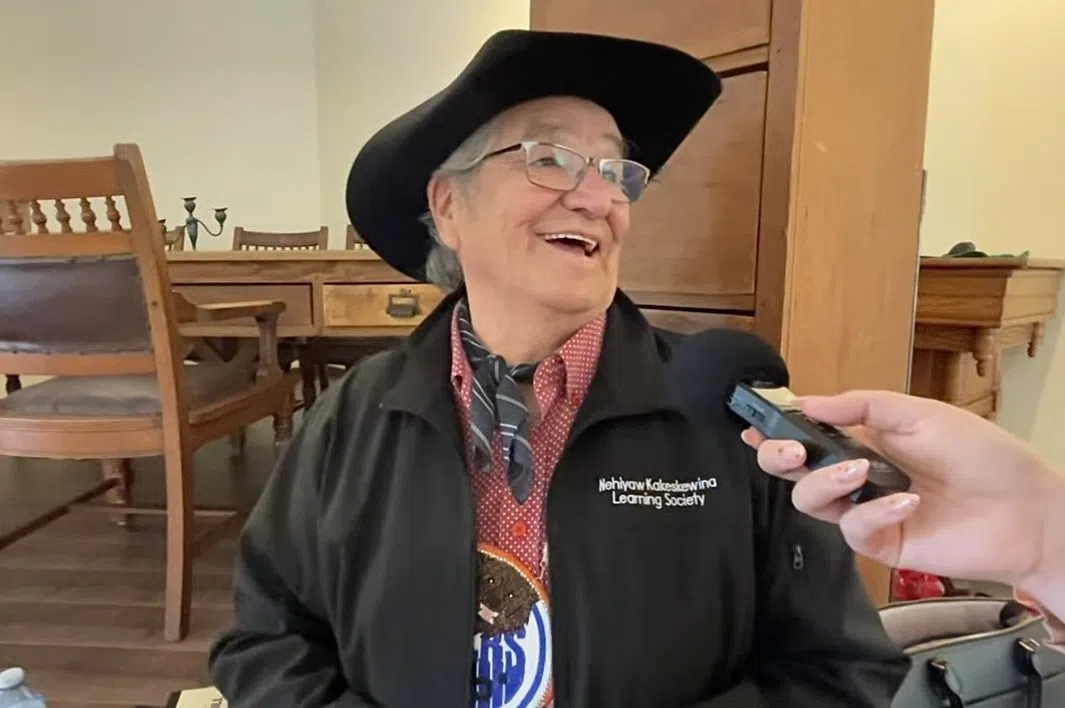
Eric Tootoosis is a knowledge keeper from Poundmaker First Nation. He is part of the Fort Battleford visitor experience working group. (Alex Brown/650 CKOM)
Tootoosis said he feels the establishment of a working group is a positive move from Parks Canada. he is optimistic it will result in meaningful changes to the story currently shared at the site.
“We have now this opportunity to test this reconciliation. See how true it is,” he said. “We are going to try our best.”
As he spoke to the group of school children, Tootoosis noted in recent years he has observed a societal wave rising in support of Indigenous people. He said the most meaningful way people can participate in reconciliation is by simply showing up with an open mind.
“Go to Indian events. Come and observe and learn and listen,” he said. “Keep it away from repeating history and keep it at a celebration level.”
Editor’s note: The story has been updated to reflect ongoing efforts by Parks Canada to present diverse perspectives at the site.
